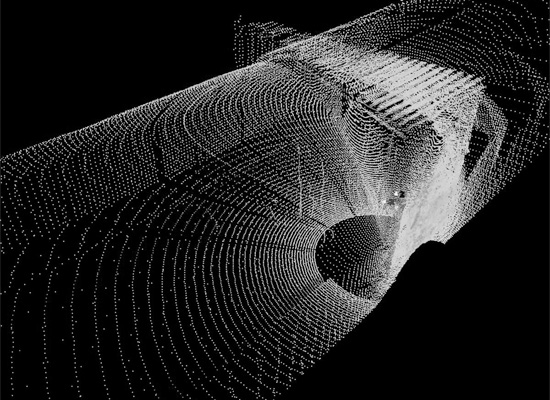
While clearing several months' worth of accumulated bookmarks, we rediscovered an article from The New York Times about laser scanning in Glasgow — or to be more precise: laser scanning the city itself.
A few years ago, we read, a group from the Glasgow School of Art “began surveying a swath of the center of Glasgow, along the River Clyde, creating 3-D digital representations of some 1,400 buildings and dozens of streetscapes.” The project led to commissions from the Scottish government's heritage agency to scan other historical landmarks in the country. And later this spring, the group will be part of a team that will scan Mount Rushmore to create “the most complete and precise three-dimensional models ever of the site, millions of times more detailed and accurate than the best photographs or films, precise down to the tiniest fraction of a millimeter.”
So precise are these digital models that they can be used not only to facilitate much needed restoration work of deteriorating monuments but also to recreate them if they are completely destroyed by natural or man-made disasters. In other words, if the Bamiyan Buddhas had been laser scanned before they were obliterated by the Taliban, they could now be reconstructed with unbelievable accuracy.


We're inevitably led to fantasize a team of laser scanners shooting billions of pinpricks of light at the Acropolis or Machu Picchu, converting them into deterrestrialized point clouds. Not waiting until the buildings get corroded down to bedrock by an abrasive mixture of tourists and climate change, or even until the scans are completed to start reconstruction, the surveyors connect their data servers to a distant swarm of Pike Loop robots, which immediately begins to fabricate these ancient sites in foreign terrain. It's BLDGBLOG's wettest wet dreams.
Better yet, forget those surface monuments. How about something subterranean like the underground necropolis of Domitilla outside Rome or La Subterranea in Guanajuato, Mexico? Both of these places have been laser scanned, and their ghostly digital facsimiles await to be physicalized.

There are also those abandoned sewers, stormwater tunnels and subway tunnels. Day and night, laser scanners that have gone mobile will be deployed into these voids, and bit by pinprick bit, these labyrinths that once confounded, concealed and even consumed trespassers with their disorienting mazes will resolve into total comprehensibility. Every detail will be known to you.
Simultaneously, disembodied limbs out in some vast tract of land will get to work replicating these filigreed abysses. Once completed, it will look like a city eroded down to its subsurface infrastructure. It'll be the playground for urban explorers who might be looking for more muted thrills and for architects who could no longer wait for the mythical Golden Age of WPA 2.0 to play out their desires.
CLUI and Atlas Obscura will no doubt lead tactical tours.
What will you do here in this infrastructure disconnected from the network?